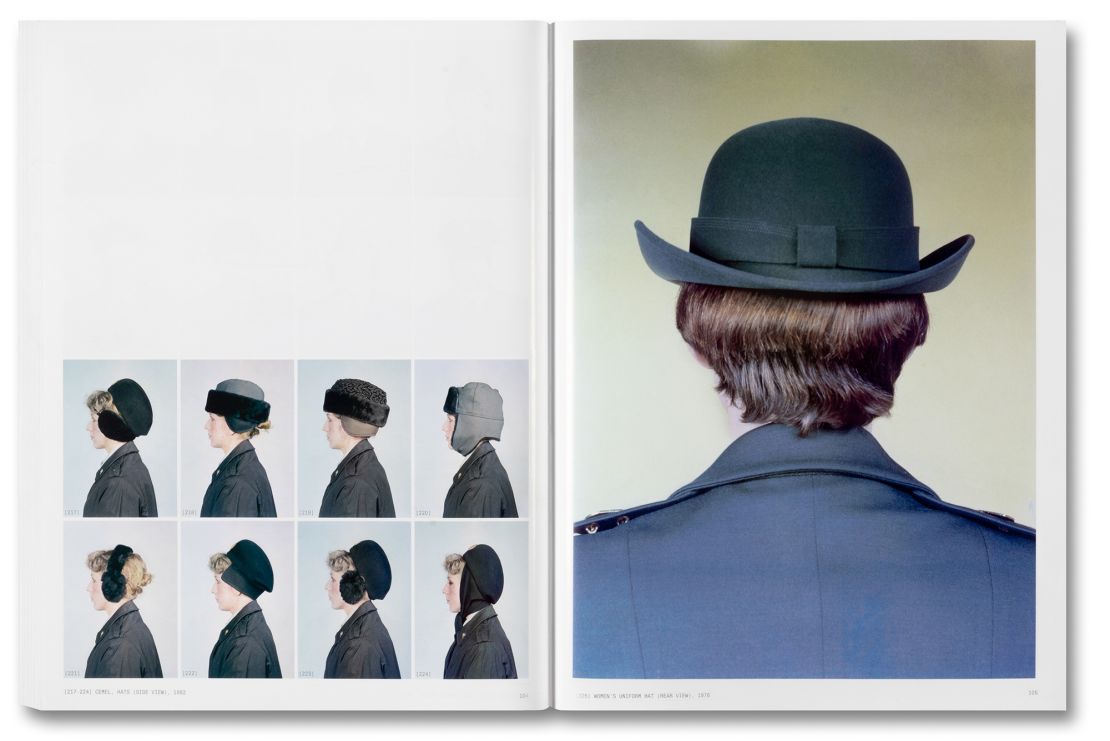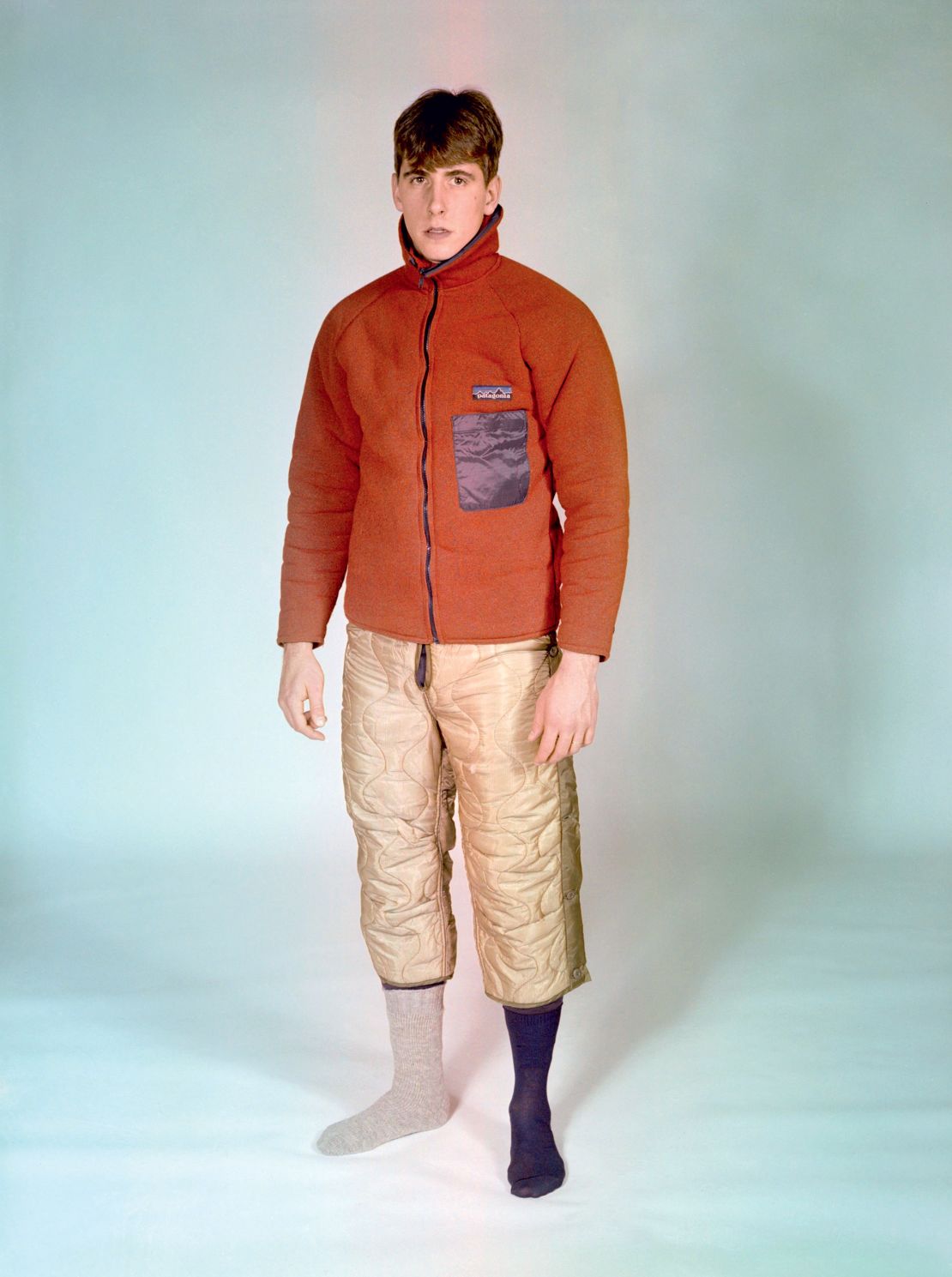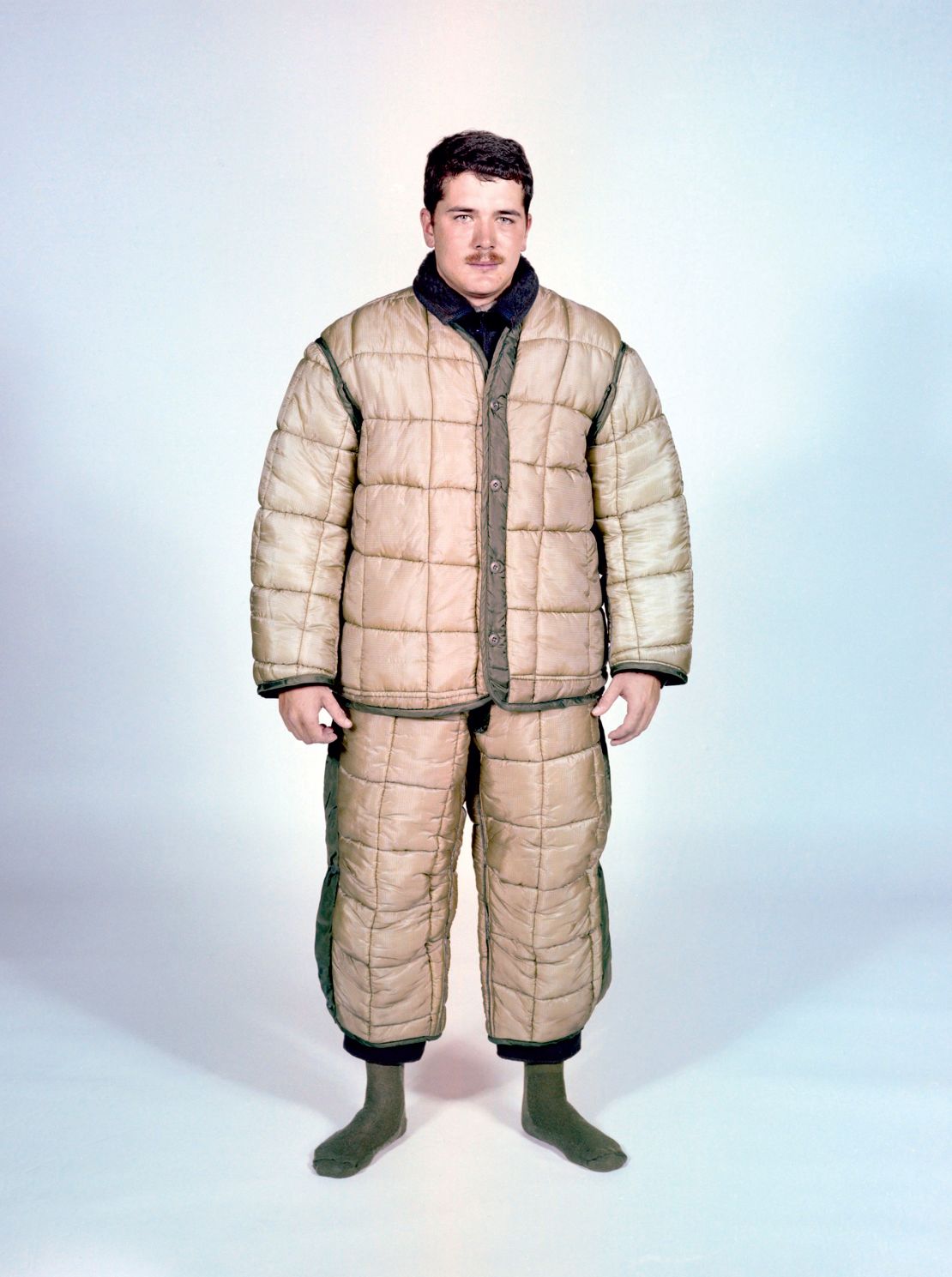CNN
—
Despite the ugly realities of war, military-adjacent aesthetics have enjoyed a long affiliation with the fashion industry and pop culture at large; from the mainstream use of camoflage prints and epaulettes on the shoulders of jackets to the widespread adoption of colors such as army green and khaki. These styles have made cameos on stage of late too: at the DNC and Lollapalooza (with the Harris-Walz campaign and Chappell Roan’s “Midwest Princess” tour, respectively).
Matthieu Nicol, whose singular new monograph is called “Fashion Army,” isn’t especially engrossed in the military. “Actually, I’m a food photography collector and a picture editor,” he told CNN on a video call. The new title however, recently published by SPBH Editions, in tandem with a show at French photography festival Les Rencontres d’Arles (now touring), examines the “evolution of military attire into iconic fashion” — namely via uniform prototypes — and follows his 2022 food photography book “Better Food for Our Fighting Men.”
Both are the product of Nicol’s exhaustive research practice, which a few years ago led him to the US Army’s Natick Soldier Systems Center (NSSC), a still active military compound in the Boston region that deals not with arms but functionality (primarily textiles), and a vast corpus of declassified pictures. Of the nearly 15,000 he found in the online archive, “Fashion Army” re-contextualizes an edit of 350, featuring images of non-models from various military branches posing in uniform.

While Nicol’s starting point was photography, as fashion critic Angelo Flaccavento observes in the book’s essay, “Function is Form,” there is a sartorial throughline present: “The images in this book,” he suggests, “not only have an essential quality of fashion, but actually ooze a glaring sense of now.”
Produced for reasons unknown (the US Army declined to answer Nicol’s numerous questions about the photographs’ origins and objectives), the series has the sensibility of a fashion portfolio, while the clothes themselves mirror the prints, structures and silhouettes of contemporary trends, or rather vice versa (the pictures were made between the late 70s and early 90s, loosely coinciding with the conclusion of the Vietnam War and the beginning of the first Gulf War, Nicol noted).
“They were not meant to be to be broadcast,” he said. “The US Army is a society within society — thousands of people work for them — and (while) these images are not propaganda, they’ve been produced to seduce, to sell their prototypes to different parts of the army.”

The correlation between the images here and wider fashion trends is explicit, too. One picture of a man in a red fleece paired with some quilted trousers, feels particularly relevant in 2024, while the same onion-quilt pattern speaks to the vogue for liner jackets, spearheaded by brands such as Uniqlo and Marfa Stance. Camouflage too, naturally, is prevalent in the book’s pages, while the sunglasses that appear chime with more experimental designer fashion.
“These images resonate so much with what I see today, some images look almost like Carhartt campaigns,” Nicol continued. “I have a 15-year-old daughter who wears baggies and camo patterns, and (Louis Vuitton creative director) Pharrell Williams and the Vuitton guys have these camo patterns too. It’s interesting that both very high fashion and streetwear have taken (inspiration). Military research always has civilian applications.”
On the front and back covers, a man and woman appear separately in white protective vests, recalling Helmut Lang’s widely lauded 1998 catwalk shows which featured similar designs (Timothée Chalamet wore an archive black leather version to promote Wonka in Las Vegas in 2023). “A fashion item fascinates because it pleases the eye first, but also because it comes charged with symbolic values, be it status or modernity,” Flaccavento stressed.

Of course, military style has been appropriated by different subcultures for decades. Typically cheap, army surplus stores informed counterculture style in the 1960s, later shaping the uniform of aughts indie bands like The Strokes. Even Williams’ SS24 debut for Louis Vuitton, wherein the multi-hyphenate debuted a new camo mutation, was a call-back to the (camo-heavy) fabric of Billionaire Boys Club, the label he co-founded with Japanese designer Nigo in 2003. Moreover, hero pieces by Italian brands C.P. Company and Stone Island directly navigate this relationship, echoing the innovations of the U.S. Army.
“Besides the fact they’re beautiful and well produced, what was striking to me about these images is that they use the same production we see today,” Nicol added, relaying his initial read of the pictures’ characteristics, which align with a 90s aesthetic proposed by Juergen Teller, amongst others. “When I showed the images to friends working in fashion, they showed me the ecommerce sites of Acne Studios and Martin Margiela: the clothes look the same, the models look the same — but these images are 40 years old.”









